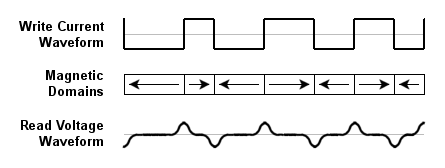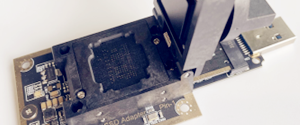Technical Requirements for Encoding and Decoding
Note: There are in fact many data encoding and decoding methods. The following are the most common ones used for PC-related technologies.
You might think that since there are two magnetic polarities, N-S and S-N, they could be used nicely to represent a “one” and a “zero” respectively, to allow easy encoding of digital information. Simple! Well, that would be nice, but as with most things in real life, it usually doesn’t work that way. There are three key reasons why it is not possible to do this simple 1-to-1 encoding:
* Fields vs. Reversals: Read/write heads are designed not to measure the actual polarity of the magnetic fields, but rather flux reversals, which occur when the head moves from an area that has north-south polarity to one that has south-north polarity, or vice-versa. The reason the heads are designed based on flux reversals instead of absolute magnetic field, is that reversals are easier to measure. When the hard disk head passes from over a reversal a small voltage spike is produced that can be picked up by the detection circuitry. As disk density increases, the strength of each individual magnetic field continues to decrease, which makes detection sensitivity critical. What this all means is that the encoding of data must be done based on flux reversals, and not the contents of the individual fields.
* Synchronization: Another consideration in the encoding of data is the necessity of using some sort of method of indicating where one bit ends and another begins. Even if we could use one polarity to represent a “one” and another to represent a “zero”, what would happen if we needed to encode on the disk a stream of 1,000 consecutive zeros? It would be very difficult to tell where, say, bit 787 ended and bit 788 began. Imagine driving down a highway with no odometer or highway markings and being asked to stop exactly at mile #787 on the highway. It would be pretty hard to do, even if you knew where you started from and your exact speed.
* Field Separation: Although we can conceptually think of putting 1000 tiny N-S pole magnets in a row one after the other, in reality magnetic fields don’t work this way. They are additive. Aligning 1000 small magnetic fields near each other would create one large magnetic field, 1000 times the size and strength of the individual components. Without getting too far into the details, let’s just say that this would, in layman’s terms, create a mess.
Therefore, in order to encode data on the hard disk so that we’ll be able to read it back reliably, we need to take the issues above into account. We must encode using flux reversals, not absolute fields. We must keep the number of consecutive fields of same polarity to a minimum. And to keep track of which bit is where, some sort of clock synchronization must be added to the encoding sequence. Considering the highway example above, this is somewhat analogous to adding markers or milestones along the road.
Idealized depiction of the way hard disk data is written and then read. The top waveform shows how patterns are written to the disk. In the middle, a representation is shown of the way the media on the disk is magnetized into domains of opposite direction based on the polarity of the write current. The waveform on the bottom shows how the flux transitions on the disk translate into positive and negative voltage pulses when the disk is read. Note that the pattern above is made up and doesn’t follow any particular pattern or encoding method.In addition to the requirements we just examined, there’s another design limit that must be taken into account: the magnetization limits of the media itself. Each linear inch of space on a track can only store so many flux reversals. This is one of the limitations in recording density, the number of bits that can be stored on the platter surface. Since we need to use some flux reversals to provide clock synchronization, these are not available for data. A prime goal of data encoding methods is therefore to decrease the number of flux reversals used for clocking relative to the number used for real data.
The earliest encoding methods were relatively primitive and wasted a lot of flux reversals on clock information. Over time, storage engineers discovered progressively better methods that used fewer flux reversals to encode the same amount of information. This allowed the data to effectively be packed tighter into the same amount of space. It’s important to understand the distinction of what density means in this context. Hardware technology strives to allow more bits to be stored in the same area by allowing more flux reversals per linear inch of track. Encoding methods strive to allow more bits to be stored by allowing more bits to be encoded (on average) per flux reversal.
Data recovery Salon welcomes your comments and share with us your ideas, suggestions and experience. Data recovery salon is dedicated in sharing the most useful data recovery information with our users and only if you are good at data recovery or related knowledge, please kindly drop us an email and we will publish your article here. We need to make data recovery Salon to be the most professional and free data recovery E-book online.
World’s Top Data Recovery Hardware Tools
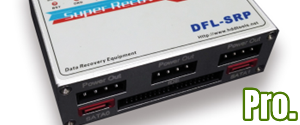
Easy to use at good price
Recover SATA, IDE, External HDDs, NVME SSDs, etc Order Now here
POTABLE DEVICE & NVME SSD RECOVERY TOOL
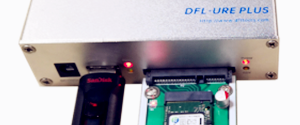
Recover USB Device and NVME SSDs at high speed! Read Details here.
DFL-PCIE DATA RECOVERY RECHARGE
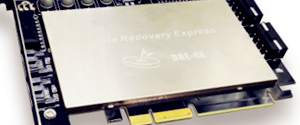
Best data recovery hardware tool to start a data recovery business, read details here
RECOVER SCRATCHED HDDS

Recover lost data from scratched hard drives, read details here.
SURFACE PRO. RECOVERY
BEST HEAD REPLACEMENT TOOLS
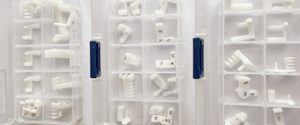
The most cost-effective head replacement tools for Seagate, WD, Samsung, Hitachi, Toshiba, Fujitsu

